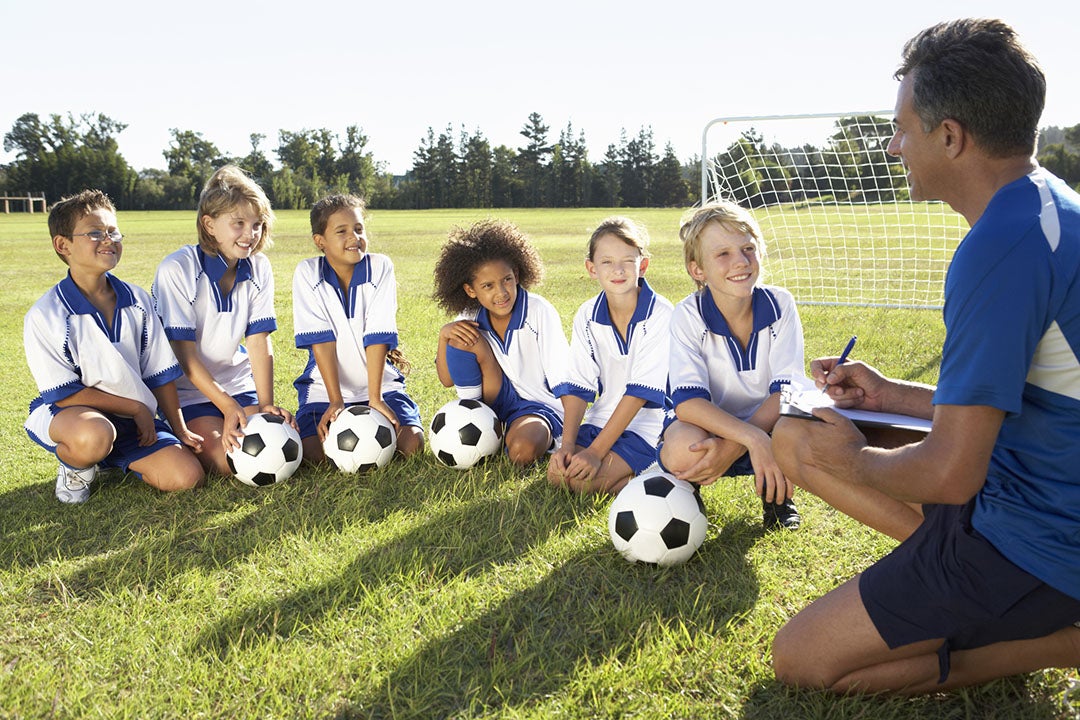Until someone tells me different, I’m currently one of the greatest multi-sport athletes in the world. Just ask me. I’m the Bo Jackson of foursquare and cornhole. Maybe it’s not the most glamorous “sports” ever, but the chances of me pulling a hamstring are extremely low. How’d I get here and how’d I manage to keep my athletic mojo going (I also love to run, swim and play an occasional game of racquet ball) as I push 50? There’s no one reason, but it would be difficult to ignore the joy factor in my sports upbringing.
I grew up in a rural town a few hours north of Detroit on Lake Huron – a town as sports-obsessed as what kids now experience, but not exactly the same either. We played everything, everywhere, at all hours of the day and all times of the year. We played Wiffle ball on the beach in our bare feet with a huge sand dune serving as our “center field wall.” Friends would bum rides to our house for Saturday tackle football. My dad cobbled together enough buddies and resources to pour a ½-court cement basketball slab in our backyard and walked away to leave us to our own devices. To this day it’s like religion to play on that court.
We created bike obstacle courses and raced, and even once built a full-scale putt-putt course with Styrofoam cups buried in the ground for holes. Sure, kids would step away for a Little League baseball game or a pee wee basketball game, but they would always be back in time for a game of 500 (a baseball-centric game, Google it) as the sun went down. It was, admittedly, a privileged existence. Our rules, sometimes our invented games, solving our own conflicts along the way. Magic.
Today, we’ve lost a little of that magic. For a variety of reasons, we’ve seen youth sports go largely from kid-driven free play to more parent-driven costly play, which has led to led to less access and less participation across the board – rural, urban and suburban. Only 14 percent of kids in Western New York and Southeast Michigan combined (the markets the Ralph C. Wilson, Jr. Foundation serve) are physically active to the level recommended by the Center for Disease Control. That’s even less than the already abysmal national average of 27 percent.
And it matters. Research shows that physically active kids are more likely to be physically active adults. They’ll have greater cognitive function, better mental health, better educational outcomes, and fewer health problems. And we lose as a society when kids aren’t active, through billions of dollars of related downstream healthcare costs and lost productivity.
At the Ralph C. Wilson, Jr. Foundation, we’re looking to increase the number of physically active kids. There’s no silver bullet, but we have a pretty good idea of what “good” looks like in youth sports thanks to our partners at the Aspen Institute and their Project Play framing. We also have an amazing local infrastructure in Western New York and Southeast Michigan – thanks in large part to the Community Foundation for Greater Buffalo, the Community Foundation of Southeast Michigan, and the working groups they’ve helped us form – poised to, collectively, continue helping us make change.
There are already amazing things happening in Western New York and Southeast Michigan to address these issues, and the Foundation has invested over $50 million to date to both lift up, and add to, that work. Everything from building the physical infrastructure for free play, like our Built to Play partnership with KaBOOM! and the Tony Hawk Foundation to build innovative play spaces and skateparks; to programmatic grants; to the contribution of data and research like the regional State of Play reports we launched in 2017, and beyond are included.
In partnership with the German Marshall Fund, the Foundation is also taking a cross-sector group of thinkers and influencers – grassroots sports practitioners, professional sports team representatives, municipal park managers and planners, and more – on a week-long study tour to Ruhr Valley in Germany and Barcelona, Spain. There, we’ll be looking at several things, including how those parts of the world successfully leverage sports and active recreation to achieve healthier and inclusive public spaces; innovative examples of sports governance and cross-sector partnerships; and integrated approaches to urban planning, placemaking and infrastructure to support sports and recreation for all ages.
The mission? Lift our heads up enough from our own work to learn and be inspired by others. Build relationships and connect with each other, while we see what cross-sector collaboration looks like somewhere else. See innovation happening outside of our own markets to get kids out, moving their bodies and having fun.
Basically, we’re taking a deep breath from our own important work to find some other ways on how we might get our magic back. We can’t wait to bring our findings back to our communities. And can you bet if any one of our travel partners happens to jump on a Futsal court along the way, I got next.
Jim Boyle is Vice President for Programs and Communications at the Ralph C. Wilson, Jr. Foundation. He oversees grant making in the foundation’s focus areas of: Youth Sports & Recreation (including the Project Play Western New York and Project Play Southeast Michigan partnerships); Park, Trails & Green Design; and Nonprofit Support & Innovation. The Aspen Institute Sports & Society Program will hold the 2019 Project Play Summit in Detroit on September 17-18, in part to share lessons learned from its community-based work in Michigan and New York with the Ralph C. Wilson, Jr. Foundation.


